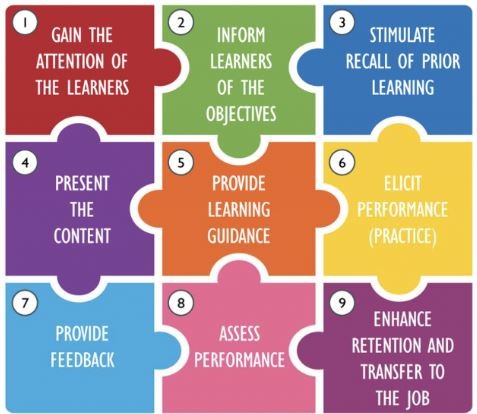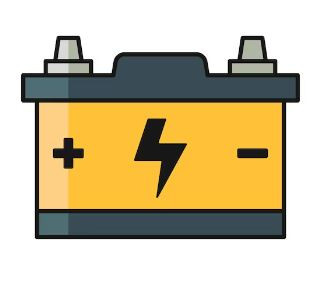Gilly Salmon的”五阶段模型“
Stage 1 Access and Motivation
- In the first stage trainers or learning designers should be able to determine appropriate platform, management system, social media system(example Google Meet or Zoom, or application which will be used for conducting online learning.
- After that, the most important thing to do is ensuring that learners have easy access toward those platform, system, or application.
- The ease of learners in accessing them will decrease at least one burden of learners. Furthermore, they will be more attracted to dwell in it.
- It indicates that learners are motivated to be involved actively in learning process.
- Beside the easy access, in this first stage trainers should also give welcoming briefing in the face-to-face learning on how to access and families with the platform feature
- It can be a greeting, simple description about the course, and encouraging learners.
- This kind of communication is important to make learners feel pleasant in this digital environment.
- This pleasure will be able to emerge sense of belonging within the learners so they will feel as important part of the class. Therefore, they will engage in all learning activities that have been designed by the trainers.
- Encouragement is also given to learners in this stage to grow their confidence that they capable to be in the class process. Learner will be receiving the Email notification and the link from the trainer 1-3 days in advance to access to the classroom learning.
- The image of a fun learning should be also conveyed to make them enthusiast to follow all activities from the beginning to end.
Here is the example of welcoming and encouraging:
"Welcome, everyone. The purpose of today’s meeting is to agree on the marketing strategy for the launch of a new product.'
"Goodmorning, everyone. Today’s meeting is to discuss the important to master the skills of CPR to save a life and also the procedure step. The meeting is going to last no more than 30 mins.
Hi, everyone. I sent you the agenda and training material before the meeting, so you should all have a copy of what’s on it. If you want to say something, then just interrupt as we go through this particular meeting.
“Hello everyone, before we start, can I have an orientation to ensure all of you are families with the on-line plate form and how to get support if you have any questions.
I would appreciate if all of you can key your name on your window and key in some message on the message function. Please also click a thrum-up sign to indicate everything is in good condition
While you are clicking “raise hand”', I wish to share the following:
Here, we will be following the guidelines somewhat similar to what has been created for our class, mainly centering on:
- One conversation at a time
- Always turn your video on and put to mute if you are not talking
- Defer judgment and show respect of various viewpoints
- Contribute actively during the group discussion
- Use positive and encouraging language in your post
- Maintain at least a minimum of 20 words for each posting
Hence, please participate as actively and as much as you can, because what you learn here, will impact subsequent lessons. Next, let us do a quick team activity by doing the following within the next 5 minutes:
- Click your ‘mute’ on and do a self-introduction and
- introduce about your work and if your work involves in a risk, share with us if you have any experience on CPR
- Introduce yourself and share with us how you will progress as a learner and how you best your strength to learn?
In the meantime, I will start the ball rolling by first introducing myself
I am John Tan, the facilitator for this synchronous online learning phase.
The picture you see in my background describes on my hobbies. I like photography, please visit my “Instagram” if you have more photos to share with me. Glad to learn together with you all!
Salmon 5 stage model is a process with a concept like stair from below to up steps. Prof. Gilly Salmon stated that the success of lower stage will influence the success of the next steps. Therefore, it is important to ensure learners have:
- easy access toward platform and system which are used for learning
- motivation to be actively engaged in learning process
第一阶段 - 访问和动机
- 在第一阶段,培训师或课程设计师应该能够确定合适的平台、例如利用学习管理系统(LMS 、 GOOGLE CLASSROOM)、社交媒体系统(例如 Google Meet 或 Zoom,用于进行在线学习的应用程序平台)。
- 之后,最重要的是确保学习者可以轻松访的在这些平台、系统或应用程序学习。
- 学习者使用它们的‘便利性’ (Google Meet)将至少减轻学习者的学习负担。此外,他们会更喜欢待在线上学习。
- 这可以表明学习者能够更有动力积极参与学习过程。
- 除了易于访问(登入)之外,在第一阶段,培训师还应在面对面学习中提供欢迎简介,介绍如何使用平台功能访问和应用程序与功能
- 可以是问候语、简单的课程描述和鼓励学习者。
- 这种交流对于让学习者在这个数码环境中感到愉快是很重要的。
- 这种快乐的学习将能够让学习者产生归属感,让他们感觉自己是课堂的重要组成部分。因此,他们将参与培训师设计的所有学习活动。
- 在这个阶段也给予学习者鼓励,以增强他们对自己能够参与课堂过程的信心。学员将提前 1-3 天收到电子邮件被通知和来自培训师的链接点,以访问(登入)在线课堂学习。
- 还应传达有趣学习的形象,使他们热衷于从头到尾关注所有活动。
Salmon 的5 阶段模型是一个过程,其概念类似于从下到上的阶梯。 Gilly Salmon教授表示,下阶段的成功将影响上一步的成功。 因此,重要的是要确保学习者具备:
- 能够轻松访问(登入)用于在线学习的平台和系统
- 积极参与学习过程的动机(激励)
这里有的例子
这是一个在线交流的欢迎和鼓励例子:
“欢迎大家。今天会议的目的是就学习“心肺复苏法CPR” 的概念与重要性,并了解如何执行CPR的6大紧急步骤来拯救患者。我们的会议将持续不超过30分钟。
"大家好。我在上线之有通过邮件给你们发了今天的线上课程节目表与课程手册(教材与作业本子),所以你们都应该有一份副本。如果你想说点什么,那么就在我们进行这个特定的线上培训前时停断一下。“
“大家好,在我们开始之前,我先做一个自我介绍,以确保你们都熟悉在线平台的学习应用与操作,如果您有任何问题时,该如何获得支持与支援。
"你们都可以在我的窗口右上角,看到我的名字,我是张老师。如果你们所有人都可以在窗口上键入您的姓名并在信息沟通功能上键入一些信息,我将不胜感激。还请大家单击一个提示标志以表明一切都处于良好状态"
"当您点击“举手”时,我想分享以下内容:xxxxxxx
在这里,我们将遵循与为我们的课程创建的指南,共同达成共识,一起集中在:
- 每一次只有一人说话
- 请始终打开视频,”如果您不说话,请调至到“静音
- 推迟判断并尊重各学员分享的观点
- 在小组讨论中积极参与
- 在您的分享中使用积极和鼓励的语言
- 每个帖子至少保持至少20个字
- 每当每个学员或老师分享知识后,请打上“OK” 表示收到
因此,请尽可能多地积极参与,因为您在这里学到的知识会影响后续课程与应用。让我们在接下来的 5 分钟内进行以下快速的团队学习活动:
- 点击打开你的 “静音”(检查麦克风),做自我介绍和 (轮流)
- 介绍您的工作,如果您的工作涉及风险,请与我们分享您是否有CPR方面的经验
- 自我介绍并与我们分享您作为学习者,将如何进步自己以及如何发挥自己的学习优势?
“同时,我将首先介绍自己
我是 John Tan,是这个同步在线学习阶段的主持人。在我的背景中,你可以看到的图片描述了我的爱好。我喜欢摄影,如果您有更多照片要与我分享,请访问我的“Instagram”。很高兴和大家一起学习!”
下来,邀请各学员也自我介绍。
Stage 2 Online Socialization 线上社交
- This stage is about familiarizing and providing bridges between culture, social, and learning environment.
- Online socialization can be done by announcing about platform and how to use it in learning activities.
- Stage 2 also involves learners to establish their identity in learning group.
- They will be divided into several small groups to work together.
- The duty of trainers here is creating small micro community through active and interactive activities.
- The grouping can be done by various technique such as application for random grouping or just based on trainer’s decision to make team work run well.
Here is the example of implementing stage 2:
learners read information from trainer, for example:
“Well, I hope you guys have accessed online via Google Classroom, then you can access some CPR videos and material that have been uploaded there. You can learn about the definition of the survival chain, the symptoms, and the CPR procedure. While the discussion during our learning will be made via Google Meet.”
“Please share your preferred learning style and show us the numbers 1> Visual style 2>Audio, and 3> Kinesthetic”. The information you share will help me to contextualize my training material to help maximize your learning retention. Let's start with our first conversation.
- Hello, good morning everyone? Do you still imagining there are more than 350,000 cardiac arrests occur outside of the hospital each year?
- What can we do to save more live?
- Anyway, have you ever got any knowledge and skills or experience in saving someone life? There are about 10,000 cardiac arrests in the workplace each year, did you know: only 50% of people can locate an automated external defibrillator (AED) at work? With 10,000 cardiac arrests annually in the workplace, knowing this small piece of information has the potential to save thousands of lives.”
“Why is the chain of survival important?
The “Chain of Survival” refers to the chain of events that must occur in rapid succession to maximize the chances of survival from sudden cardiac arrest (SCA). The metaphor is a simple way to educate the public about its vital role in helping SCA victims. So, make sure everyone stay tune during this 20 minutes so that no one left to enjoy this journey.”
- learners read the materials that have been given by trainers.
- learners and trainers discuss material about descriptive text via Google Meet
- learners are divided into some groups
- each group join breaks out room of Google Meets so that they can discuss in small group
- each group get a name of historical place including important information about the place in form of video and text that have been uploaded in Google Classroom.
- In this stage, learners are given motivation to comprehend material and information well so that they can contribute optimally in their group.
阶段 2 - 在线社交
- 这个阶段是关于熟悉和提供文化、社会和学习环境之间的桥梁。
- 在线社交可以通过宣布平台以及如何在学习活动中使用来完成。
- 第 2 阶段还涉及学习者在学习小组中建立自己的身份。
- 他们将分成几个小组一起工作讨论。
- 培训师的职责是通过积极互动的活动创建小型微型社区(小组讨论)。
- 分组可以通过各种技术来完成,例如应用随机分组或仅基于培训师的决定以使团队工作顺利进行。
以下是实施阶段 2 的示例:
学习者从培训师那里阅读信息,例如:
“好吧,我希望你们已经通过谷歌课堂在线的平台,然后你可以阅读一些已经上传到那里(谷歌课室)的心肺复苏术视频和教材。您可以了解生存链的定义、症状和 CPR 程序。而我们的学习期间讨论将通过 Google Meet 来进行。”
“请分享您比较喜欢的学习风格,并输入(告诉我们)数字 1> 视觉风格 2> 音频和 3> 手动(实践)”。您的分享与信息,将可帮助我将我的如何量身定做与改进我的培训教才,以帮助最大化地提高您的学习保留(记忆)率。让我们马上开始我们第一次的谈话与交流。
- 大家好,早上好?您是否还在想象每年有超过 350,000 次心脏骤停发生在医院外?
- 那我们能做些什么来拯救更多的生命呢?
- 无论如何,你有没有任何拯救他人生命的知识和技能或经验?工作场所每年大约有 10,000 起心脏骤停,您知道吗:只有 50% 的人可以在工作场所找到自动体外除颤器 (AED)?工作场所每年有 10,000 起心脏骤停,知道这一小块信息有可能挽救数千人的生命?”
“A同学, 你知道为什么生存链很重要?” 。。。。(或分成小组来讨论与分享)
“生存链”是指必须快速连续发生的一系列事件,以最大限度地提高心脏骤停 (SCA) 的生存机会。这个比喻是一种简单的方式来教育公众了解其在帮助 SCA 受害者方面的重要作用。因此,请确保每个人都在这 20 分钟内保持关注,这样就没有人离开来享受这段旅程了。”
提示
- 学习者阅读培训师提供的材料。
- 学习者和培训师通过 Google Meet 讨论有关描述性文本的材料
- 学习者被分成几组
- 每个小组加入都可以在 Google Meets 会议室中进行讨论,以便他们可以小组讨论
- 每个组都获得一个“题问或问题,包括已上传到谷歌课堂的视频和文本形式的关于该心肺复苏法的重要信息。
- 在这个阶段,学习者有动力去理解教材料和信息,以便他们能够在小组中做出最佳贡献。
Stage 3 - Information Exchange
- In this stage 3 - trainer facilitate task and support use of learning materials.
- Here every single learner in each group will discuss and exchange information about the topic they get.
- The discussion is done for achieving learning goals through assessment or project to be accomplished.
- Therefore, trainers must ensure that each group have comprehended the flow of the discussion.
- Trainers can guide them by giving discussion outline or guiding questions to make a good discussion flow.
Here is the example of information exchange stage:
“ Thank you everyone, for your sharing and the some valuable information. Appreciate all the sharing.
Let me now share with you the following,
The objectives of this lesson are to:
1. Describe the 4 common factors and symptom on cardiac arrests (Online)
2. Explain the important of apply early CPR and what is the mean of VF (Online)
3. List up the DRAABC procedure and explain in detail (Online)
4) Perform the full cycle of DRSABC to perform a complete cycle of CPR (Face-to-Face)
In this segment, you will gain a quick overview of 4 factors and symptom on cardiac arrests in our workplace “
“Download the video and learning note file from the google classroom. View the Video FIRST before going through the discussion.
Based on the Video;, Please take 10 minutes and then discuss and reply to the following:
- Describe the 4 common factors and symptom on cardiac arrests (Online)
- Explain the important of apply early CPR and what is the mean of VF (Online)
- List up the DRSABC procedure and explain in detail (Online)”
Break the class into the 4 groups and invite them to the break-up room.
“Share what do you think, are suitable steps and procedure we have just learnt, to save a life.”
Remarks:
- Each group learns and collects information about the CPR factors and steps
- Each group has been ready in Google Meet breakout room made by trainer as the host
- Trainer gives outline to guide the discussion like in the picture below
- Discussion outline about descriptive text
- Discussion is running, every learner must contribute idea or information they have from video they watched, text they read or their background knowledge
- Each group recap the important information of the CPR and VF, they have discussed as material for composing descriptive text
第三阶段 - 信息交换
- 在此阶段 3 中,培训师促进任务并支持学习材料的使用。
- 在这里,每个小组中的每个学习者都将讨论和交流他们所获得的课程信息。
- 讨论是为了通过评估或要完成的项目来实现学习目标。
- 因此,培训师必须确保每个小组都理解讨论的流程。
- 培训师可以通过 – 提供讨论的大纲(题目)或引导问题来引导他们学习与讨论交流,以形成良好的讨论流程。
下面是信息交换阶段的例子:
“谢谢大家,感谢你们的分享和一些有价值的信息。感谢所有的分享。
下面就和大家分享一下,
本课的目标是:
1.描述心脏骤停的4个常见因素和症状(在线)
2. 解释应用早期 CPR 的重要性以及 VF 的含义(在线)
3.列出DRSABC程序并详细解释(在线)
4)执行DRSABC的全程来执行CPR(Face-to-Face)的完整周期
在本部分中,您将快速了解如何在我们的工作场所面对的心脏骤停的 4 个因素和症状“
“大家可以从谷歌教室下载视频和学习笔记文件。在进行讨论之前先观看视频。
请花 10 分钟,然后回复以下内容:
- 描述心脏骤停的4个常见因素和症状(在线)
- 解释应用早期 CPR 的重要性以及 VF 的含义(在线)
- 列出DRSABC程序并详细解释(在线)”
将全班分成 4 组并邀请他们到不同的课室间,进行讨论与小组讨论。
之后,当学员再次的回到虚拟课室时,邀请他们各自分享与呈现(他们所收集的信息)
“分享你的想法,是我们刚刚学到的合适的步骤和程序,可以挽救生命。”
评论:
- 每个小组学习和收集有关 CPR 因素和步骤的信息
- 每个小组都已在由培训师作为主持人制作的 Google Meet 分组讨论室中准备就绪
- 培训师提供大纲来指导讨论,如下图所示
- 关于描述性文字的讨论大纲
- 讨论正在进行中,每个学习者都必须贡献他们从观看的视频、阅读的文本或背景知识中获得的想法或信息
- 每组回顾 CPR 和 VF 的重要信息,他们讨论过作为撰写描述性文本的材料
Stage 4 Knowledge Construction 知识建构
- In the 4th stage, trainers facilitate learners to construct knowledge.
- They may plan learners’ interaction to be more collaborative and more team oriented.
- Learners are given opportunity not only to be consumers but also contributors of knowledge.
- Competency area that can be developed here are creativity, critical thinking, practical thinking, discovery, applying and practicing.
- If the trainers are success applying stage by stage from the beginning learners will feel happy and the goals in this stage will be achieved as well.
- For instance, after learners recap the discussion result about important information of the CPR and steps, they compose a descriptive text based on it.
- They can use Google Docs or Google Slides which can be accessed by all group members so they can write collaboratively.
- The text must be based on the generic structure and the component of the descriptive text.
- Hence, all group members should support each other and contribute their thought to have good quality work and discussion.
After finishing the description text, all members post their work in a CPR blog which has been prepared by trainers. Then, every learner as personal visit the blog to give comment to their friends’ work. The comments can be about the content, structure, and their impression or their dream related with the CPR in the text.
Example:
“As you respond to the above discussion question, I would like each of you to do the following at about the same time so as further enrich our sharing:
- Select a group’s response to the discussion question
- Comment on the response by sharing what you like about the response?
- How do you think the response can be further improved?
- Share with the class how you will apply the knowledge learned and what is the best way to retain the knowledge and ensure everyone in the company can do the right thing.”
The instructor will organise the team to share and reflect on the question above. Get everyone to participate and share.
“The ‘Chain of Survival’ activities must occur in rapid succession to maximize the chances of survival from sudden cardiac arrest (SCA). The metaphor is a simple way to educate the public about its vital role in helping SCA victims. It suggests that each link is critical and interdependent, and the Chain of Survival is only as strong as its weakest link. Bystanders can help save lives by addressing the first three links in the Chain of Survival.
The links in the Chain of Survival are:
- Recognize SCA and Call 995: If a person is unresponsive and not breathing normally, call 995. Follow the emergency dispatcher’s instructions.
- Start CPR: Start CPR to triple the chance of survival. Push hard and fast in the center of the chest (100-120 pumps/minute).
- Use AED: Use an automated external defibrillator (AED) to restart the heart. Follow the step-by-step audio/visual instructions.
- EMS response: Emergency medical services professionals provide advanced life support and transport to hospital.
- Hospital care: Hospital professionals provide integrated post-cardiac arrest advanced care, which can include mild therapeutic hypothermia.
- Recovery: Care team addresses the unique physical, social, and emotional needs of survivors and their families, both in the hospital and post hospital discharge.”
第四阶段 - 知识建构
- 在第四阶段,培训师帮助学习者构建所学习到的知识。
- 培训师可以计划如何让学习者互动,他们可以如何更协作和更加团结与以团队目标为导向。
- 学习者不仅有机会成为学习者,而且有机会成为知识的贡献者。
- 在这里可以发展的能力领域是创造力、批判性思维、实践性思维、探索、应用和实践。
- 如果培训师从一开始就逐步锁定成功与目标,学习者将会获得满足并感到高兴,并且此阶段的目标也将实现。
- 例如,学习者在回顾CPR重要信息和步骤的讨论结果后,根据它撰写描述性文本来回顾知识。
- 小组成员都可以引用 Google Docs 或 Google Slides来互动,以便他们可以同步协作编写与分享。
- 文本必须基于通用结构和描述性文本的组成部分。
- 因此,所有小组成员应相互支持并贡献自己的想法,以进行高质量的工作和讨论。
完成描述文本后,所有成员将他们的作业发布在培训师准备的 CPR 博客中。然后,每个学习者都以个人身份访问博客,对他们朋友的作业发表评论。评论可以是关于内容、结构、他们的印象或他们与文本中的CPR与急救相关的内容。 例子:
“在您回答上述讨论问题时,我希望你们每个人几乎同时做以下事情,以进一步丰富我们的分享:
- 选择小组对讨论问题的回应
- 通过分享您喜欢的回复来评论回复?
- 您认为如何进一步改善反应?
- 与全班分享您将如何应用所学知识,以及保留知识并确保公司中的每个人都能做正确的事情的最佳方式。”
导师将组织团队对上述问题进行分享和思考。让每个人都参与和分享。
“‘生存链’活动必须快速连续发生,以最大限度地提高心脏骤停 (SCA) 的生存机会。这个比喻是一种简单的方式来教育公众了解其在帮助 SCA 受害者方面的重要作用。它表明每个环节都至关重要且相互依存,而生存链的强度取决于其最薄弱的环节。旁观者可以通过解决生存链中的前三个环节来帮助挽救生命。
生存链中的链接是:
- 识别 SCA 并拨打 995:如果有人没有反应且呼吸不正常,请拨打 995。按照紧急调度员的指示进行操作。
- 开始心肺复苏术:开始心肺复苏术,使生存机会增加三倍。在胸部中央用力快速推动(100-120 泵/分钟)。
- 使用 AED:使用自动体外除颤器 (AED) 重新启动心脏。按照分步音频/视频说明进行操作。
- EMS 响应:紧急医疗服务专业人员提供先进的生命支持和运送到医院。
- 医院护理:医院专业人员提供综合的心脏骤停后高级护理,其中可能包括温和的低温治疗。
康复:护理团队在医院和出院后解决幸存者及其家人独特的身体、社会和情感需求。”
Stage 5 Review
- Activity in stage 5 is “review” which can be done through reflection and evaluation.
- It is important to measure learners’ understanding toward the material.
- Learners can do reflection by writing down about what they have learned, what they have understood, and what they want to understand more in the discussion column or via Google Docs or even Mentimeter
- Learners can be asked to complete their reflection by adding the emoticon ? or ☹️ to reflect their feeling during the learning process. (Google form or Mentimeter Poll etc.)
- Besides, the reflection can be made in spoken form via voice note message, e.g. at Mentimeter
- Then, trainers can respond them and give more links to have more comprehension about the things that learners want to understand more.
- While the evaluation can be conducted by giving written test using Google Form or another online quiz application or Kahoot to engage the learner
- Feedback of learning process and the outcome can be given in this stage as well.
Example:
Dear all, From the many responses and peer comments which have been posted, I see the following rationale for using DRSABC to save a life.
Summary of Learning:
It would seem that: xxxxx
If you agree with my summary of learning, please click 000
Meanwhile, I would like to commend everyone for contributing to a rich and robust discussion and much knowledge was co-created as part of it.
Seems we are perhaps ready for a quiz. Please take 10 minutes to log into the quizz.com below.
Practical Scenario Analysis Narrative:
In 2022, You are in the back yard working when you hear your neighbor screaming. You run to the back of the house and you notice her 16-year-old son lying on the patio and is blue. Mom is too distraught to help other than say that Johnny was mowing the lawn.
Analyse the scenario and select the right steps of survival chain to perform the CPR
Please share your answer in the next 10 minutes
At the same time, please reflect on your learning by responding to the following:
From what you have learnt during this online phase, reflect and share:
- What are the concepts (in your own words) that you can bring to the coming Face-to-Face (F2F) lesson later in the afternoon? (The F2F Lesson will be on applying Methods of DRSABC of the CPR to rescue a life.
- Your reflections are important as we will re-visit your reflections during the F2F lesson.
第 5 阶段- 审查
- 阶段 5 的活动是“回顾”,可以通过反思和评估来完成。
- 衡量学习者对学习内容的理解很重要。
- 学习者可以通过在讨论栏中或通过谷歌文档甚至Mentimeter写下他们学到的东西,他们所理解的以及他们想进一步理解的内容来进行反思
- 可以要求学习者通过添加表情?或☹️来完成他们的反思,以反映他们在学习过程中的感受。 (Google 表格或 Mentimeter Poll 等)
- 此外,可以通过语音留言消息以口头形式进行反思,例如在MENTIMETER
- 然后,培训师可以回应他们并提供更多支援链接,以对学习者想要了解的内容有提供更多的理解。
- 虽然可以通过使用谷歌表格或其他在线测验应用程序或 Kahoot 进行笔试来进行评估,以吸引学习者
- 学习过程和结果的反馈也可以在这个阶段给出。
例子:
“亲爱的,从可以看到已经发布的许多回复和同部评论中,我看到了使用 DRSABC 来挽救生命的以下理由与益处。
学习总结:
xxxxxxxxxxxxxxxxxxxxxxxx
如果你同意我的学习总结,请点击”000”
同时,我要赞扬大家为丰富而有力的讨论做出了贡献,并且作为其中的一部分团员共同所创造了许多的知识。
看来我们可能已经准备好进行测验了。请花 10 分钟时间登录下面的 quizz.com。
https://quizizz.com/join
实践情景分析叙述:
2022 年,当你听到邻居的尖叫声时,你正在后院工作。你跑到房子的后面,你注意到她 16 岁的儿子躺在露台上,脸色发青。妈妈心烦意乱,只能说约翰尼正在修剪草坪。
分析场景并选择生存链的正确步骤来执行心肺复苏术
请在接下来的 10 分钟内分享您的答案
同时,请通过以下回复来反思您的学习:
根据您在此在线阶段所学到的知识,反思并分享:
• 您可以将哪些概念(用您自己的话)带到下午晚些时候的线下面对面(F2F)课程中? (F2F 课程将应用 CPR 的 DRSABC 方法来挽救生命。
• 您的反思很重要,因为我们将在 F2F 课程中重新审视您的反思。












No Comments